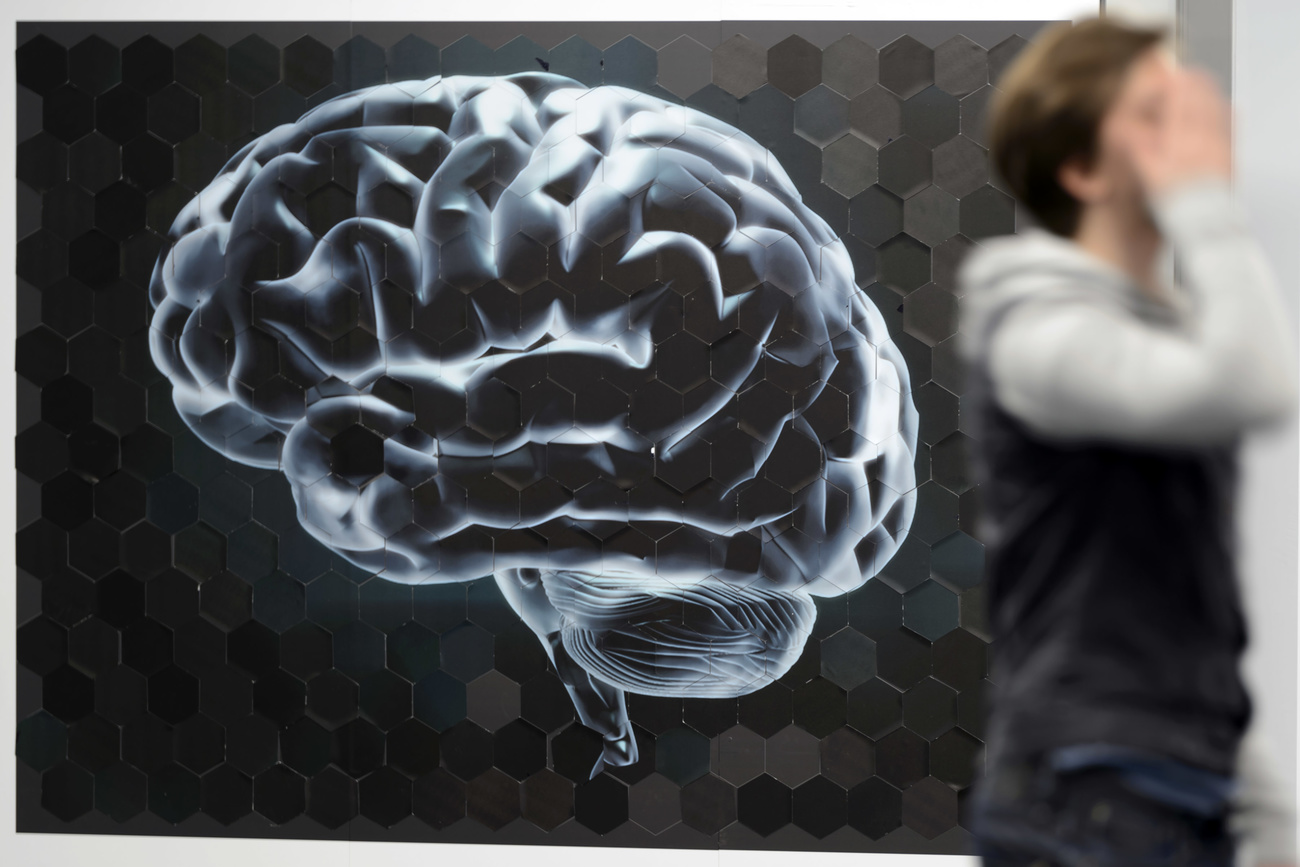Brain fingerprints evolve and could help us tackle Alzheimer

Everyone has a unique brainprint but - unlike fingerprints - it can change over time, according to a neuroscientist at the Swiss Federal Institute of Technology in Lausanne (EPFL).
This finding, which was detailed in an Oct. 15 study published by Science AdvancesExternal link, could be useful in the early detection of neurological diseases such as Alzheimer.
“The goal of my research is to analyze and understand the networks and connections in the brain, including the links between its different parts,” says Enrico Amico of the Center for Neuroprosthetics and Medical Image Processing Laboratory (EPFL). “To work on this, we use MRIs that measure brain activity over a defined period of time.”
Researchers use the data obtained to produce a summary of brain activity and translated into a graph represented in the form of colored matrices. This modelling technique is known in the scientific community as “network neuroscience” or “brain connectomics.”
“It’s all in these graphs called functional brain connectomes,” said the researcher.
These maps of neural networks, known as connectomes, allow researchers to identify a person and determine whether the person is inactive or performing a task during the scan.
“We have realized that we can find indications of the brainprint in very short time periods. So we don’t need an MRI that summarizes brain activity over 5 minutes for example. We can be satisfied with a more concise observation time”, adds the researcher.
Certain data can be detected in just under two minutes. The study also found that the information detected most quickly comes from the sensory parts of the brain, notably those linked to eye movements and visual attention.
Over time, regions of the frontal cortex, those associated with more complex cognitive functions, also begin to reveal information unique to each of us.
The next step will be to compare the brainprints of healthy patients against those of Alzheimer patients.
Previous work by the Lausanne-based scientist has shown that the unique features that make up the brainprint disappear with the progression of the disease.
“It is as if a person with Alzheimer’s loses his or her brain identity,” says Amico.
Potential applications could include early detection of neurological diseases where brain imprints disappear, such as patients with autism, stroke, or even individuals suffering from drug addiction.

In compliance with the JTI standards
More: SWI swissinfo.ch certified by the Journalism Trust Initiative
You can find an overview of ongoing debates with our journalists here. Please join us!
If you want to start a conversation about a topic raised in this article or want to report factual errors, email us at english@swissinfo.ch.